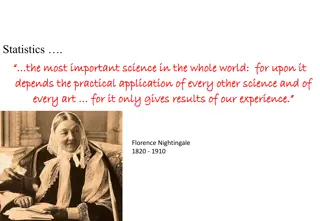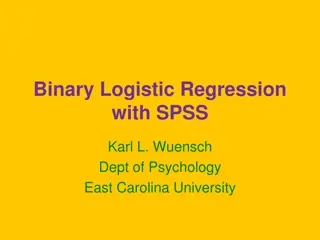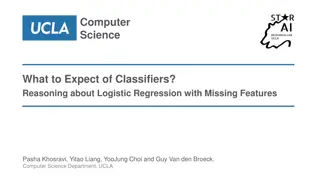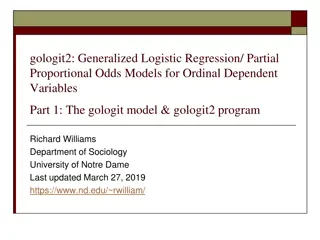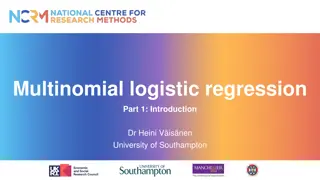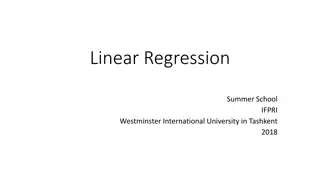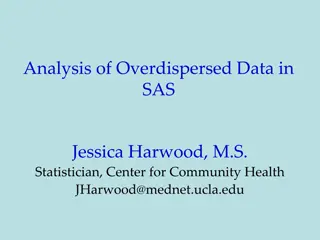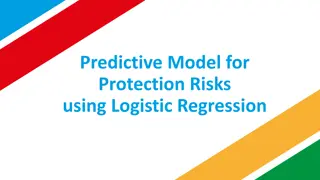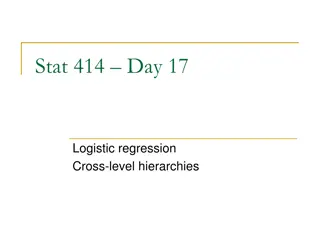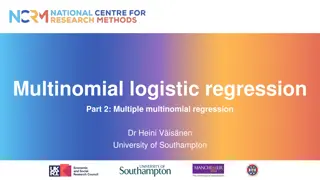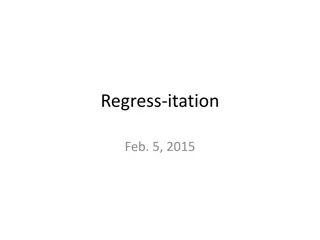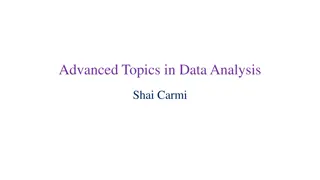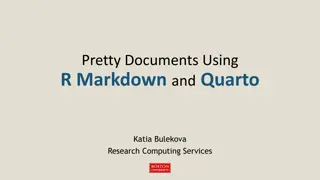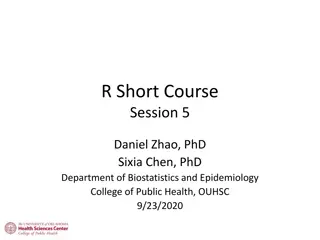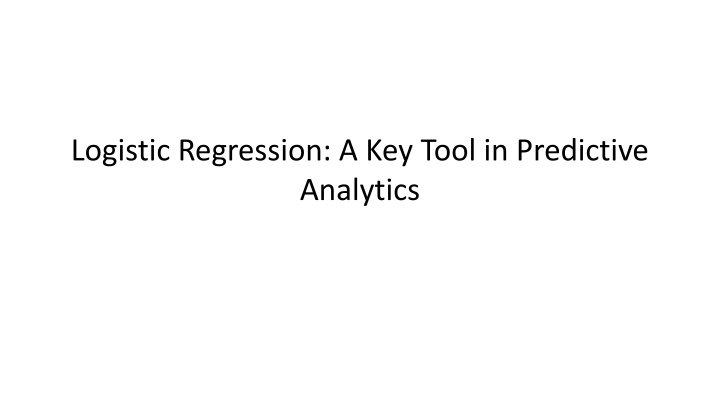
Logistic Regression for Predictive Analytics
Explore the key concepts of Logistic Regression, a powerful tool in predictive analytics. Learn its applications, model evaluation, mathematical aspects, strengths, limitations, and more.
Download Presentation

Please find below an Image/Link to download the presentation.
The content on the website is provided AS IS for your information and personal use only. It may not be sold, licensed, or shared on other websites without obtaining consent from the author. If you encounter any issues during the download, it is possible that the publisher has removed the file from their server.
You are allowed to download the files provided on this website for personal or commercial use, subject to the condition that they are used lawfully. All files are the property of their respective owners.
The content on the website is provided AS IS for your information and personal use only. It may not be sold, licensed, or shared on other websites without obtaining consent from the author.
E N D
Presentation Transcript
Overview Topics Covered: What is Logistic Regression? Applications Key Mathematics Model Evaluation Practical Considerations
What is Logistic Regression? Logistic Regression is a supervised learning algorithm used for classification tasks. Key Idea: Models the probability that an observation belongs to a specific class. Types of Outputs: Binary (e.g., yes/no, 0/1) Multinomial (e.g., one of many categories)
Applications of Logistic Regression Examples: Medical diagnosis (e.g., disease prediction) Spam email detection Customer churn analysis Credit risk assessment Why Use It? Simplicity and interpretability. Widely applicable to classification problems.
Logistic Function The logistic function maps any real-valued number to the range (0, 1). Equation: 1 ? ? = 1+? ? Graph: The sigmoid curve shows an S-shape with asymptotes at 0 and 1.
Mathematics of Logistic Regression Linear Model: ? = ?0+ ?1?1+ ?2?2+ + ???? Logistic Model: 1 ? ? = 1|? = 1+? ?0+?1?1+ +???? Log Odds Transformation: ? ?=1 1 ? ?=1 log = ?0+ ?1?1+ + ????
Model Fitting (Maximum Likelihood) Objective: Maximize the likelihood of observed data. Log-Likelihood Function: ? = ?=1 ??log ?? + 1 ??log 1 ?? Coefficients (()) are estimated using numerical optimization techniques. ?
Evaluation Metrics Accuracy: Proportion of correctly classified instances. Confusion Matrix: True Positives, True Negatives, False Positives, False Negatives. Other Metrics: Precision Recall F1-Score ROC Curve and AUC
Strengths and Limitations Strengths: Easy to implement and interpret. Works well for linearly separable data. Limitations: Assumes a linear relationship between predictors and log odds. May struggle with multicollinearity and outliers.
Summary Logistic Regression is a powerful yet simple algorithm for classification. It is based on probabilistic models and interpretable outputs. Widely used in various fields due to its effectiveness. Ensure proper feature scaling and handle class imbalance for best results.

